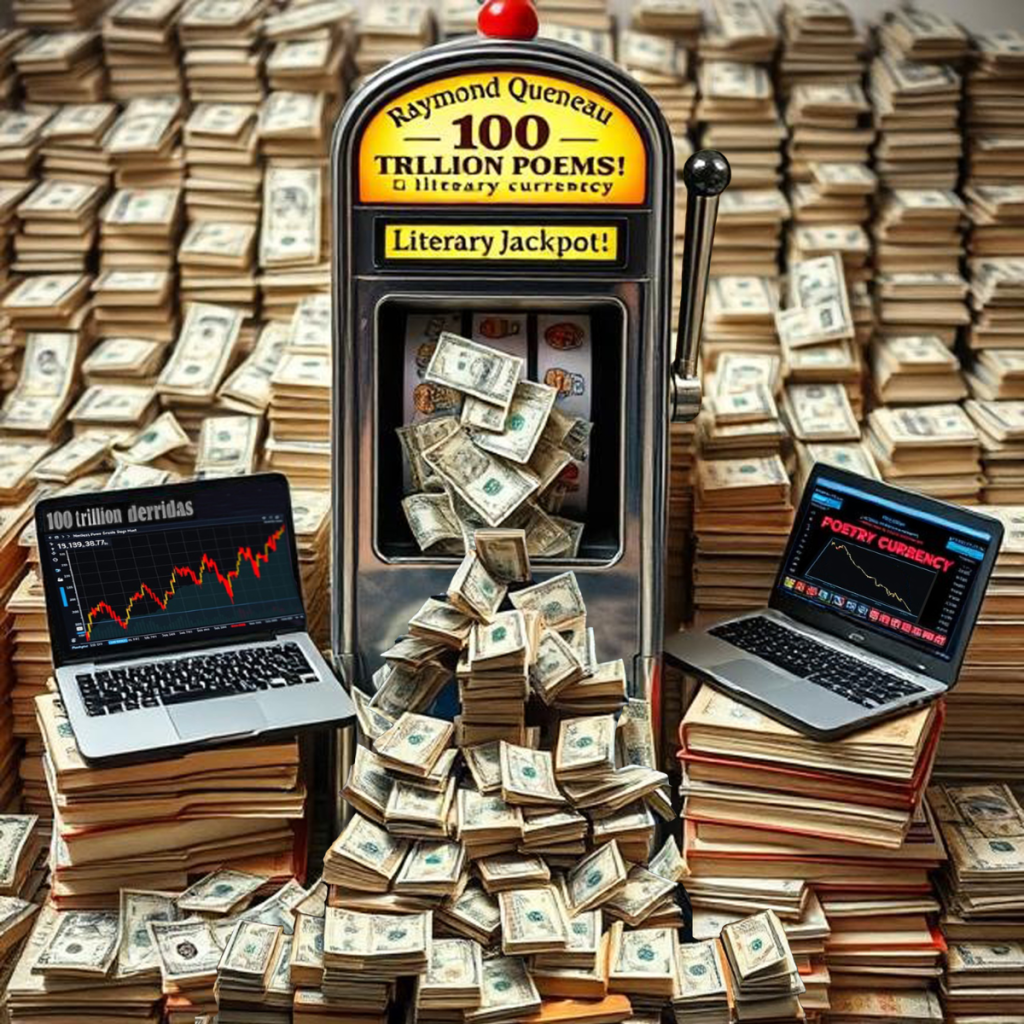Submission 2025
| Submitted by: | Kevin Kvas |
| Department: | English + Film Studies |
| Faculty: | Arts |
My research shows how literary value fluctuates as per economic models and computational information. My key case study is Raymond Queneau’s Cent mille milliards de poèmes (1961). The book consists of 10 pages of 14-line poems, each page cut into 14 strips, yielding up to 10^14 or 100 hundred trillion permutations. Queneau claimed it would take millions of years to read. Scholars praise the book for its unreadable size which they say proves Jacques Derrida’s theory that all texts are made up of signs which refer to other signs ad infinitum. I mathematically disprove this theory, showing Queneau’s text to yield exponentially diminishing returns as per economic theory and information theory. Thus it can be read very quickly. Hence my image depicts the rotaries of Queneau’s book as a slot machine spitting out cash which piles up to become pages of books, representing literature and scholarship. Two laptops depict stock market graphs: as a currency of “derridas” (exaggerated critical claims) increases in value, “poetry currency” decreases. The image thus depicts how literary interpretations are subject to economic and informatic effects, and lampoons scholarly misconceptions.
Was your image created using Generative AI?
Yes.
Did you upload any materials into an AI tool to help generate your image?
Yes.
Which model of generative AI did you use?
DeepAI.
How was your image created?
I experimented with text prompts in a free-use, public domain AI image generator. I gradually refined the query over time as I got more ideas about what the image should contain. I then generated many examples and gradually whittled the best ones down to a short list, then selected a few final contenders. I then borrowed elements from these final contenders and a few other images, combining and editing them in Photoshop.
How did you craft your prompt to guide the generative AI in creating your image? Please describe the technique or approach you used to convey your vision to the AI.
In the end, my description was about a paragraph-long and used very literal straightforward language. I continually refined the image, tested ideas, and came up with new ones as I went. Once I realized what I wanted to depict – and the best way to do that – I ran multiple simulations and selected the best results, then combined some of the elements manually. Since my project is also about the how computation influences literature, my choice of AI seemed appropriate. I did not use any advance stylization controls or features, just the defaults. My choice of words was based on how I could use various visual metaphors together to get to the gist of my thesis in a fun, entertaining, and hopefully provocative way.
Where is the image located?
A visualization of how literary value and interpretation is subject to economic effects like inflation caused by the overprinting of poetic currency.

